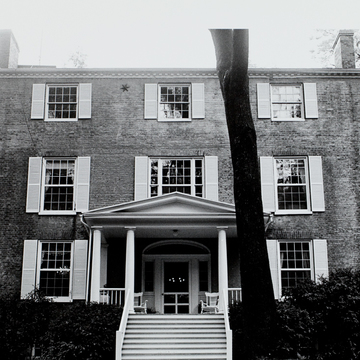Massive Rion Hall assumed its present appearance late in the nineteenth century after a full third floor and gable roof were added. The brick house was originally two stories tall and covered with a hipped roof. Details are late Federal in style, and, as is often the case in Eastern Panhandle manors, the central bay is broader than those flanking it. A pedimented Doric portico shelters the fanlighted entrance, and the central window of the second floor has a tripartite arrangement. Connected double chimneys at each end of the main block indicate the center-hall, double-pile plan within. A two-story side wing, connected to the main block by a two-story gallery, was originally a separate building.
Rion Hall and its landscaped surroundings exude a rural air of peace and plenty. Its builder, William Lucas, when asked to consider running for governor of Virginia in the 1840s, replied “I wouldn't swap my curtilage and acres for your whole city of Richmond.” A noted botanist, Lucas planted his curtilage with many unusual varieties of trees, some of which remain.

